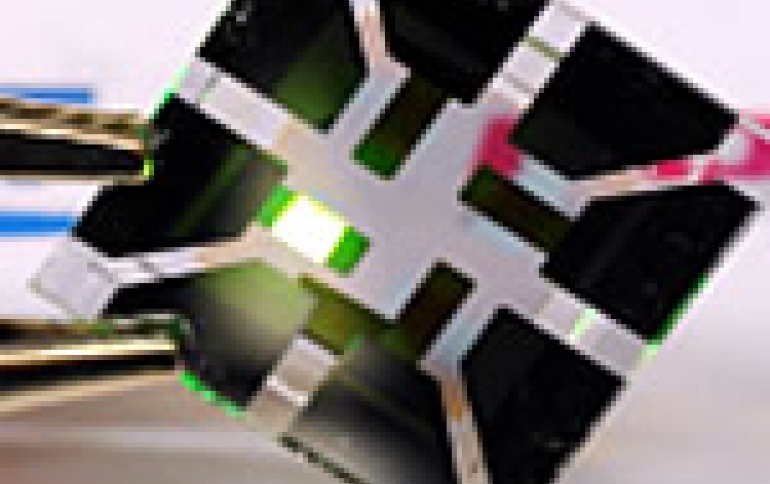
Researchers Develop Durable Flexible OLED
Korean researchers have developed an organic light-emitting diode (OLED) panel that can be rolled up like a newspaper and endures repeated bending stresses using graphene. The devlopment is paving the way for the potential application of OLED to wearable monitors or body-worn sensors.
The research team led by Yoo Seung-hyup, a professor at the School of Electrical Engineering of KAIST, and Lee Tae-woo, a professor at Dept. of Materials Science and Engineering of POSTECH, applied a stack structure consisting of multiple layers of titanium oxides (TiO2), graphenes and conductive polymers to OLED in order to overcome limitations of light transmission. The titanium oxide can endure a four times higher strain compared with existing transparent oxide electrodes.

The OLED showed an External Quantum Efficiency (EQE) of 40.5% - 1.5 times higher than the EQE of existing OLEDs. The researchers also increased the display brightness by maximizing resonance within OLED. Resonance is a phenomenon that shows a strong response to specific frequency windows.
Currently, flexible OLED technology is used in curved edges of a smartphone and TVs, but they are not truly flexible because their shape is fixed.





















